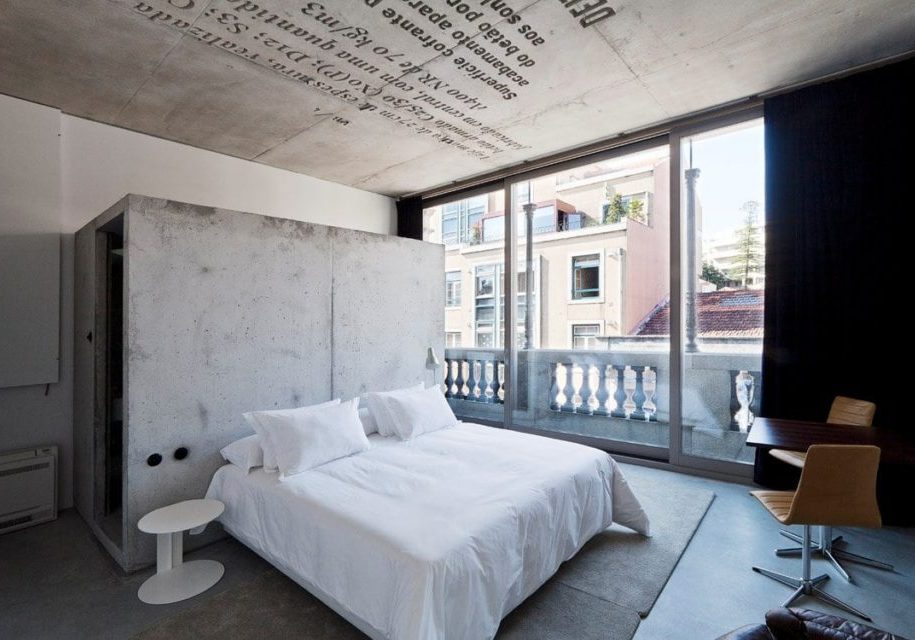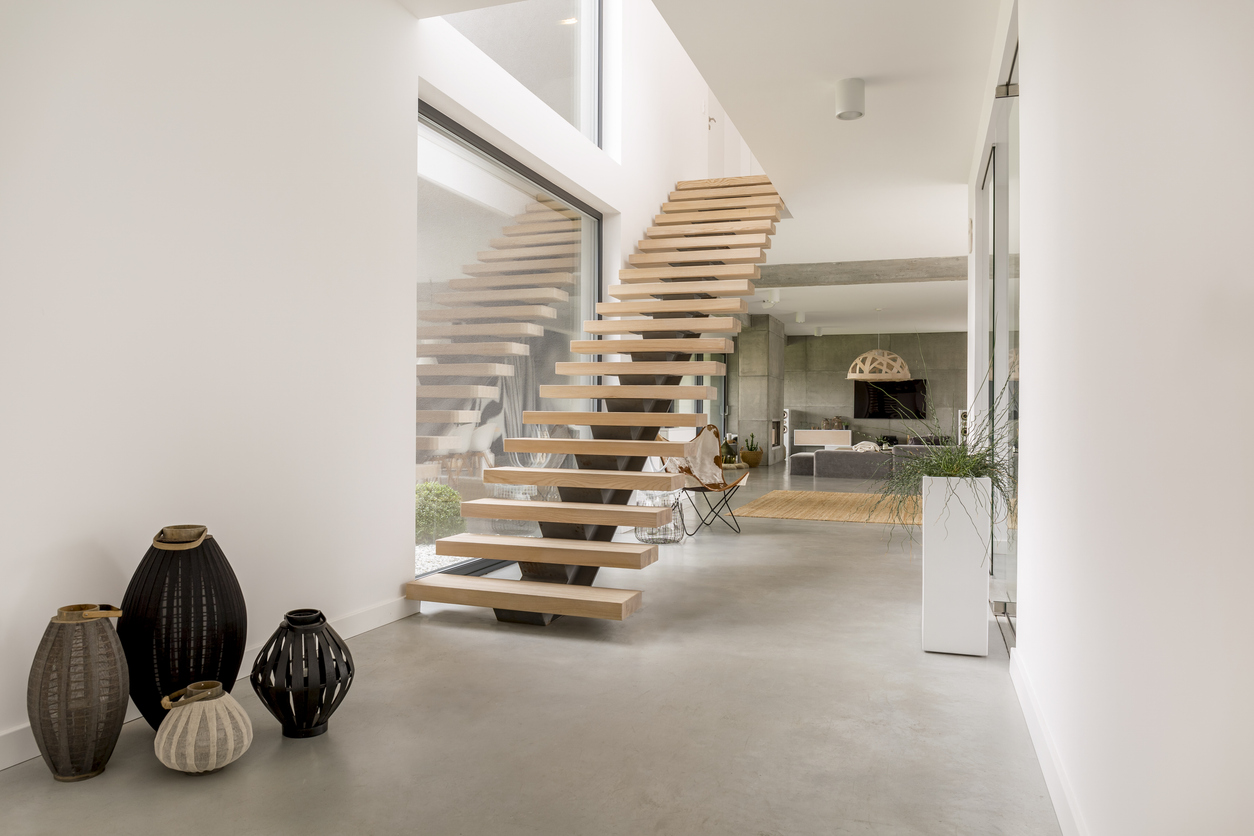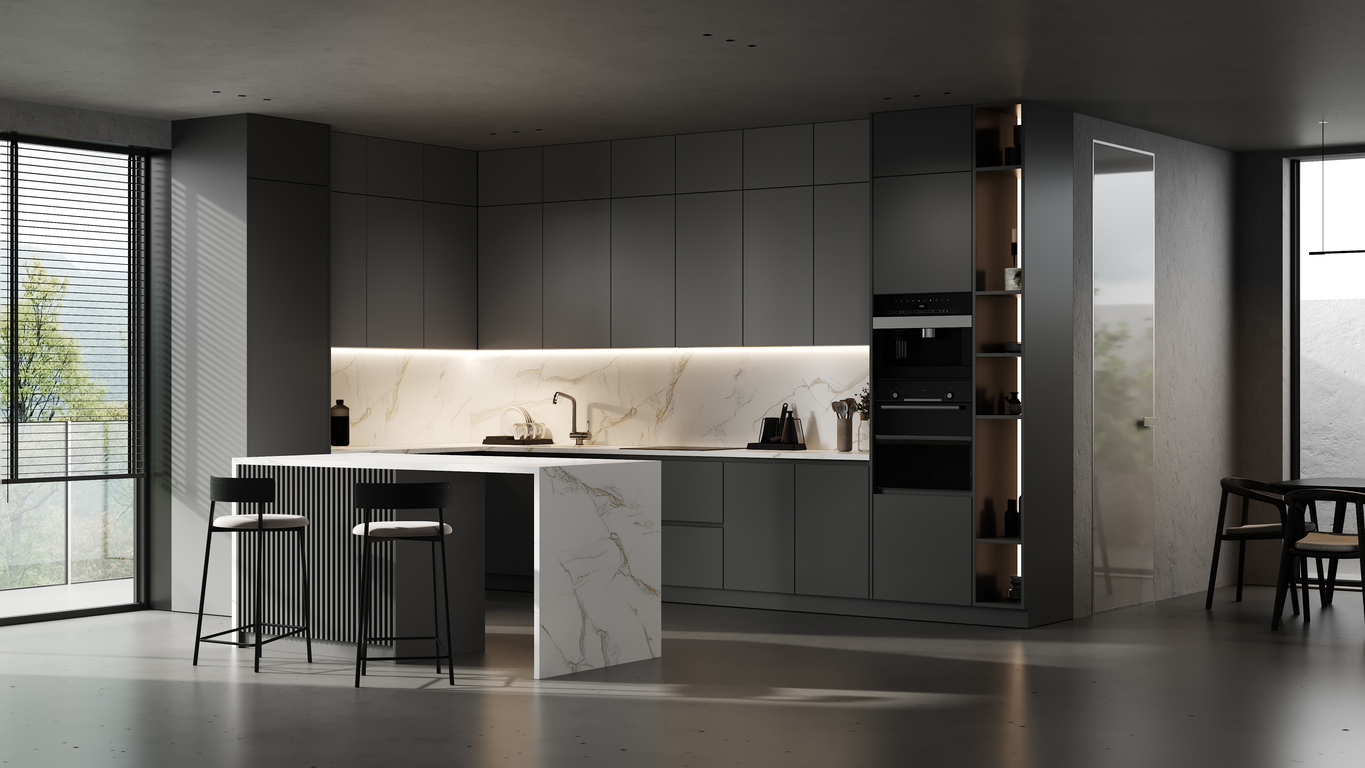
The Future of Interior Design: Exploring the Growing Trend of Microcement
by Northern Life
Contrary to popular belief, the quest for minimalist design does not mean sacrificing character or warmth in our living spaces. In fact, the burgeoning trend of microcement in interior design is proving quite the opposite. This innovative material is leading the charge in modern interiors, offering a sleek, versatile finish that does not compromise on style or substance. As we delve into the world of microcement, we uncover its ability to transform spaces with remarkable ease, providing a canvas that marries the minimalist aesthetic with personalised flair. From its eco-friendly attributes to its diverse application techniques, microcement is setting a new standard in the design world, challenging our perceptions of what it means to create spaces that are both beautiful and functional. The allure of microcement extends beyond its aesthetic versatility; it is also celebrated for its durability and low maintenance, making it a wise choice for those looking to invest in their interiors for the long haul. As we explore the nuances of colour and texture that microcement offers, we invite readers to envision the endless possibilities for customising their own spaces. Moreover, with sustainability at the forefront of design discussions, the eco-friendly appeal of microcement presents an attractive proposition for environmentally conscious individuals. As we look to the future, the continuous innovations and evolving designs in microcement interiors promise to keep this trend at the forefront of interior design. We welcome you to join us in this exploration, sharing your thoughts and experiences as we navigate the exciting landscape of microcement in modern interiors.
Embracing the Minimalist Aesthetic: The Rise of Microcement in Modern Interiors
The allure of microcement in contemporary design cannot be overstated, marking a significant shift towards minimalist aesthetics in interior spaces. This versatile material has rapidly gained popularity among designers and homeowners alike for its sleek, seamless finish and remarkable durability. Its application transcends traditional boundaries, offering a uniform and cohesive look that is both sophisticated and functional. Key advantages of microcement include:
- Flexibility in Application: Microcement can be applied to floors, walls, and even furniture, making it a versatile choice for a unified interior design theme.
- Wide Range of Finishes: It offers an array of textures and colours, allowing for personalised spaces that reflect individual style and preferences.
- Enhanced Durability: Known for its strength and resistance to wear, microcement is an ideal option for high-traffic areas, promising longevity and ease of maintenance.
- Eco-Friendly: Its minimal environmental impact, due to the reduced need for heavy machinery and the absence of joint lines, aligns with the growing trend towards sustainable design practices.
The integration of microcement into modern interiors signifies a move towards spaces that are not only aesthetically pleasing but also practical and sustainable. Its ability to create a seamless flow between different areas of a home or commercial space is unparalleled, making it a cornerstone of future interior design trends.
Versatility Unleashed: How Microcement Transforms Spaces with Ease
Embracing the dynamic nature of modern interior design, microcement stands out as a remarkably versatile material that effortlessly transforms any space. Its ability to be applied to a vast array of surfaces, from floors to walls and even furniture, allows designers and homeowners alike to achieve a seamless and cohesive aesthetic throughout their environments. The seamless finish it provides not only elevates the visual appeal but also enhances the sense of space, making it an ideal choice for both compact urban apartments and expansive homes.

One of the most compelling advantages of microcement is its durability and ease of maintenance. This material is renowned for its resistance to wear, water, and stains, making it a practical solution for high-traffic areas and spaces prone to moisture, such as kitchens and bathrooms. However, it’s important to acknowledge some drawbacks, such as the need for professional application to avoid cracks and ensure longevity. Additionally, while the initial cost might be higher than traditional materials, the long-term savings in maintenance and the timeless appeal it offers can offset the initial investment.
Exploring the aesthetic versatility of microcement reveals its capability to mimic other materials, such as concrete, stone, and even wood, offering a wide palette of textures and colours. This chameleon-like quality enables designers to craft unique spaces tailored to individual tastes and preferences. Despite its many benefits, it’s crucial to consider that the application process of microcement requires skill and precision, and the outcome heavily depends on the expertise of the applicator. This underscores the importance of selecting a seasoned professional to ensure the desired finish and durability of the applied surface.
Sustainability Meets Style: The Eco-Friendly Appeal of Microcement
As the world shifts towards more sustainable living practices, interior design is not left behind. Microcement, with its minimal environmental impact, is leading the charge in eco-friendly home and commercial space renovations. This innovative material is not only durable and versatile, but it also plays a significant role in reducing the carbon footprint associated with traditional construction materials. Its ability to be applied directly over existing surfaces eliminates the need for demolition, thereby reducing waste and conserving resources.
One of the most compelling aspects of microcement is its energy-efficient production process. Unlike conventional materials that require high temperatures for production, microcement is produced at much lower temperatures, significantly reducing energy consumption. Furthermore, its lightweight nature translates to lower transportation costs and, consequently, a smaller carbon footprint. Consider the following advantages of microcement in sustainable design:
- Reduction in waste production by overlaying existing materials.
- Lower energy consumption during manufacturing.
- Decreased transportation emissions due to its lightweight nature.
Moreover, microcement’s longevity and ease of maintenance further contribute to its eco-friendly credentials. Its seamless finish not only offers a modern and stylish aesthetic but also prevents the growth of mould and bacteria, ensuring a healthier living environment. By choosing microcement, homeowners and businesses are not just opting for a high-quality, aesthetically pleasing material; they are also making a conscious decision to support sustainable and responsible design practices.
The Art of Application: Techniques Behind Microcement Finishing
Delving into the realm of microcement application reveals a meticulous and artistic process that demands both precision and creativity. This innovative material, known for its versatility and durability, requires a skilled hand to achieve the seamless, high-quality finish that has made it a favourite among interior designers and architects. The application technique is not just about applying a layer; it’s an art form that involves several stages, including substrate preparation, primer application, microcement layering, and sealing. Each step is crucial and must be executed with care to ensure the final surface is not only aesthetically pleasing but also stands the test of time.
Comparing microcement application techniques to traditional tiling or plastering illuminates the level of skill and detail involved. For instance, while tiling requires precise cuts and alignment, microcement application is more about the artisan’s ability to create a uniform and smooth surface over irregular shapes and sizes.
Understanding the nuances of microcement application not only enhances appreciation for the material but also underscores the importance of hiring professionals with the right expertise. The choice of primer, the mix ratio of the microcement, the type of sealant used, and even the environmental conditions during application can significantly affect the outcome. Therefore, when considering microcement for a project, it’s essential to consult with specialists who can navigate these complexities. This ensures that the investment not only elevates the space aesthetically but also delivers a durable and long-lasting finish.
Colour and Texture: Customising Your Space with Microcement Options
Exploring the vast array of colour and texture options available in microcement applications opens up a new realm of interior design possibilities. Designers and homeowners alike are now empowered to tailor their spaces with unparalleled precision, ensuring that every surface can reflect personal taste and style. The versatility of microcement, from smooth, polished finishes to more rugged, textured looks, allows for a seamless integration into various design aesthetics, from minimalist to industrial chic. This customisability is not just about aesthetics; it also plays a crucial role in creating spaces that are both functional and emotionally resonant, making it a key consideration in modern interior design projects.

One of the most compelling aspects of microcement is its ability to transform spaces with a unique blend of durability and style. This material is not only celebrated for its aesthetic versatility but also for its practical benefits, such as its resistance to moisture, stains, and wear. These characteristics make it an ideal choice for high-traffic areas and wet environments like kitchens and bathrooms. Furthermore, the ability to customise its colour and texture means that each application can be made truly unique, offering an exclusive look that cannot be easily replicated. This level of personalisation is what sets microcement apart in the future of interior design, promising spaces that are not only beautiful but also uniquely tailored to meet the specific needs and preferences of each individual.
Durability and Maintenance: The Long-Term Benefits of Choosing Microcement
Microcement stands out in the interior design landscape for its remarkable durability and low maintenance requirements. This innovative material, composed of a high-performance mix of cement and polymers, is applied in thin layers to create a seamless surface. Unlike traditional flooring options, microcement is resistant to scratches, stains, and water, making it an ideal choice for both residential and commercial spaces. Its resilience to daily wear and tear means that spaces retain their aesthetic appeal with minimal effort, ensuring that interiors not only look sophisticated but are also practical for everyday use.
When considering the long-term benefits of various flooring options, microcement often emerges as a superior choice. To illustrate, let’s compare microcement to traditional hardwood and tiles in terms of durability and maintenance. Hardwood floors, while beautiful, are prone to scratches and require regular refinishing. Tiles, on the other hand, can crack and the grout may need frequent cleaning or replacement. In contrast, microcement, with its seamless finish, eliminates grout lines, reducing cleaning time and eliminating the risk of cracked tiles. Furthermore, its ability to withstand heavy foot traffic without showing signs of wear makes it a cost-effective solution over time.

This comparison clearly shows that microcement offers significant advantages in terms of both durability and maintenance. Its long lifespan, coupled with its resistance to common forms of damage, makes it an exceptionally cost-effective choice for modern interiors. By choosing microcement, homeowners and businesses can enjoy beautiful, high-performance surfaces that stand the test of time with minimal upkeep.
Future Trends: Innovations and Evolving Designs in Microcement Interiors
With the relentless pursuit of versatility and aesthetic appeal in interior design, microcement has emerged as a forefront material, offering a seamless and contemporary finish. Its adaptability to various surfaces, including floors, walls, and even furniture, marks a significant shift towards more fluid and cohesive spaces. The growing trend towards minimalistic and industrial themes further amplifies the demand for microcement, highlighting its ability to blend functionality with style. However, it’s crucial to consider the technical expertise required for its application, ensuring a flawless finish that stands the test of time.
One of the most compelling advantages of microcement is its durability and ease of maintenance. This material is not only resistant to scratches and stains but also waterproof, making it an ideal choice for both residential and commercial spaces. Its application process allows for creativity, enabling designers to experiment with textures and colours. Yet, the initial cost and the need for professional installation can be seen as drawbacks, potentially limiting its accessibility to a wider audience. Despite these challenges, the long-term benefits, including its sustainability and low environmental impact, present a strong case for its continued popularity.
Looking ahead, the integration of technology with microcement applications promises to revolutionise interior design further. Innovations such as thermochromic microcement, which changes colour with temperature, and conductive microcement, capable of transmitting electricity, are on the horizon. These advancements could open up new possibilities for interactive and dynamic environments, enhancing both the functionality and aesthetic appeal of spaces. While these innovations are still in their infancy, their potential to redefine the boundaries of design is undeniable, signalling a bright future for microcement in the evolving landscape of interior design.
Check the microcement manufacturer’s website: https://www.festfloor.com/




